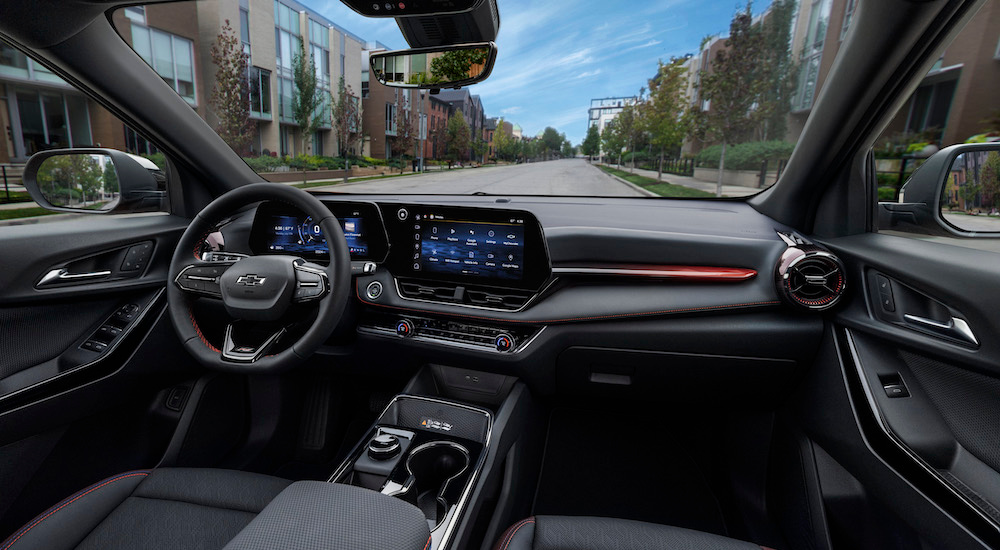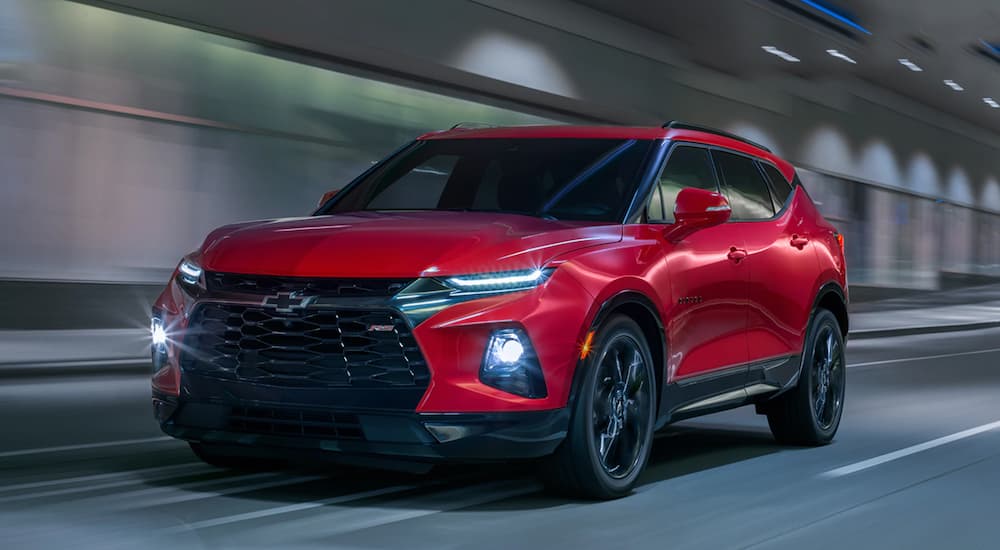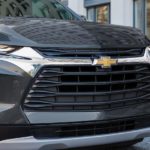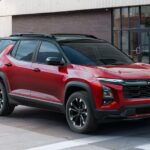Looking at the Chevy lineup these days, it’s getting harder to tell if it’s varied and offers great options for a wide range of drivers or if it’s a bit bloated and in need of some streamlining. The selection of SUVs, in particular, that you’ll find at a Chevy dealer these days could certainly be described as excessive in terms of how many different models there are available. This is somewhat exacerbated by how generous Chevy is with their number of available trim levels, special editions, and other options, creating a full lineup that’s downright daunting for buyers. Rather than examine the entire lineup, however, today I’m going to focus on two models, the 2025 Chevy Equinox and the Blazer, to see if there’s really room for both of them.
Introduction to the 2025 Chevy Equinox and Blazer
Before we get into some important specifics, let’s briefly go over some of the basics when it comes to the Chevy Equinox and the Blazer. For starters, the Equinox is a compact SUV, though Chevy likes to call it “Small,” that sits just above the subcompact Trax and Trailblazer in their lineup (whether both of those smaller models need to exist is a topic for another day). By comparison, the Blazer is a midsize model, which means it should be larger than the Equinox with a roomier interior, but we’ll get into that in a moment.
In terms of model years, there are a few important details I should mention regarding these two vehicles. First and foremost, the 2025 Equinox marks the start of an all-new generation for this small SUV with a redesign that sees it built on an updated platform. In contrast, the current Chevy Blazer received a mid-generation update and refresh for the 2023 model year with some exterior restyling and improved interior features. Otherwise, it’s still in its first generation, which launched with the 2019 model year. This means it’s overdue for a full update. So, how do these two models compare in terms of their features?

What Do the Equinox and Blazer Have in Common?
Let’s first talk about some of the things these models have in common, along with some key ways the all-new Equinox puts itself ahead of the Blazer. One noteworthy detail is that the Equinox has grown slightly in size with its new-generation redesign, so while it remains a compact SUV, it’s now bigger than before. The result is that the 2025 Equinox is about 183 inches in length, close to 75 inches in width, and stands about 65.6 inches tall. By comparison, the midsize Blazer is about 192 inches in length, around 76.7 inches in width, and 67 inches in height. Not only is the Blazer about nine inches longer, but it starts with a curb weight of 3,918 lbs (and gets up to 4,079 lbs), while the Equinox weighs in at a sprightly 3,583 lbs.
Looking inside, the midsize Blazer offers almost 40 inches of headroom up front and 38 inches of headroom for folks in the back seats. The all-new Equinox has 40 inches of headroom up front and 39 inches of rear headroom, just as good as the larger model. What’s more, the 2024 Blazer (since its update for 2023) has 30.5 cu.ft. of rear cargo space and 64.2 cu.ft. of total cargo volume behind the front seats. Inside the 2025 Equinox, we find 29.8 cu.ft. of rear cargo space and 63.5 cu.ft. of total cargo volume behind the front row. So, looking at these numbers, choosing a midsize model rather than the compact one gives you almost no difference in interior space, just a larger and heavier overall vehicle.
The fully updated Equinox has more options than before, including a new ACTIV trim level that includes off-road-inspired looks with a unique front fascia, all-terrain tires, and more. You won’t find a similar trim on the Blazer. What the Blazer does have is an impressive 10.2-inch Infotainment display standard on every model, with some nice tech features like a wireless charging pad standard on higher trims like the RS and Premier. Of course, the Equinox now comes with an 11.3-inch Infotainment display and 11-inch configurable driver information center screen, plus the high-end RS trim features a flat-bottom steering wheel, and features like wireless charging are available for it, too. So, overall, the 2025 Equinox goes toe-to-toe with what the Blazer brings to the road, often exceeding it.
Does the Blazer Have Anything the Equinox Lacks?
The answer to this question is likely the biggest argument against the Blazer being outright dropped by Chevy because, yes, it does (two things, actually). Although I like what Chevy has done with the all-new Equinox in terms of a sleek new design, simplified trim levels, and great interior tech features, they’ve made one mistake as far as I’m concerned. The engine for the 2025 Equinox is a 1.5L turbocharged I-4 that offers 175 hp and 184 lb-ft of torque with front-wheel drive (FWD), or 203 lb-ft of torque with all-wheel drive (AWD). That’s a woefully uninspired powertrain.
By comparison, the Blazer has two engines on offer, starting with a 2.0L turbocharged I-4 that offers 228 hp and 258 lb-ft of torque. For boosted performance, there’s an available 3.6L V6 that delivers 308 hp and 270 lb-ft of torque, giving you a very nice time on the road and earning the Blazer a lot of fans. Also, the Equinox with FWD features a continuously variable transmission, while AWD models have an eight-speed automatic. The Blazer, with either engine, comes with a responsive nine-speed automatic that scores it another point as far as I’m concerned. While the Blazer is a bit longer and heavier, that doesn’t explain such a huge discrepancy in performance, especially with the Equinox starting an all-new generation.
Should the Blazer Be Discontinued?
I think there are two real answers to this question, and it depends entirely on what Chevy plans to do with the Equinox and its powertrain. If the current engine is all that Chevy wants the Equinox to have, then no, the Blazer shouldn’t be discontinued. When I think of Chevy, I think of impressive engines like you’ll find in the Corvette, the Silverado, and even the Blazer. That they carried over such a modest engine for the new generation of the Equinox is a bit of a tragedy and one of the few missteps I’ve seen Chevy make recently.
On the other hand, if they’re cooking up something sportier and simply didn’t have it ready for this first model year, or want to withhold it to make next year look better, then I feel like it’s time for the Blazer to come to an end. It’s the only midsize, two-row SUV in Chevy’s lineup, but it doesn’t do anything remarkable beyond having better engines on offer than the Equinox. While that might matter to me and some other drivers, there are plenty of people who don’t care that much about performance in an SUV. Considering the impressive tech features, spacious interior, and streamlined trim options the Equinox now provides for its new generation, it will meet the needs of a wide range of drivers.
What Does the Future Hold for the Chevy Lineup?
One final point I’d like to make is that there’s another option that I haven’t mentioned yet: a second generation for the Blazer. It’s clear that the Chevy Blazer needs more than just the mid-cycle update it received for 2023, even though the renewed exterior and interior were both quite welcome. What Chevy could do, rather than bringing it to an end just a handful of years after it was first introduced, is give the Blazer a redesign and a better sense of purpose. The all-electric version of the Blazer has an SS model with a focus on performance and speed; I’d love to see something like that for the gas-powered Blazer, leaning into what they’ve started with the 3.6L V6 that’s currently available. If Chevy makes a bold move and establishes the Blazer as a performance-focused SUV, then they’d have something that deserves its place in a notably crowded lineup.





